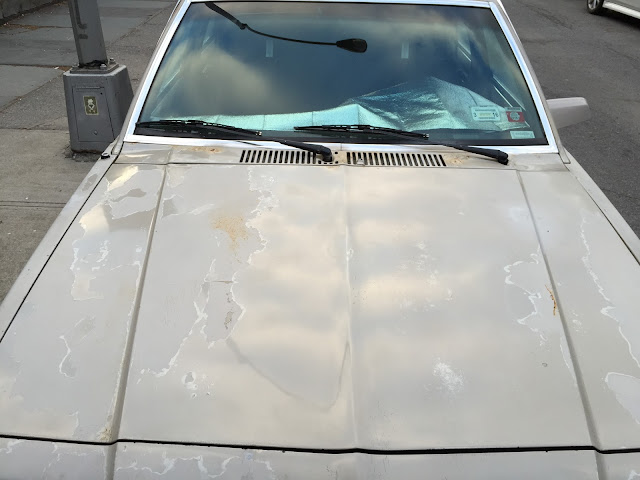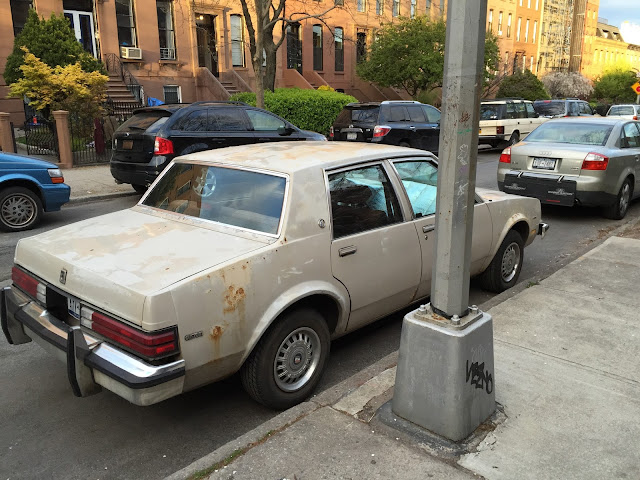IMPOSSIBLY COOL ART DECO MASTERPIECE!
On a recent beautiful day I borrowed a friends car and drove out to the Delaware Water Gap. This little number had me jerk an egregious u-turn on the spot. Check this thing out!
It's all on the sign in the window, but this is a 1931 Willys Overland Sport 6 Coupe. When you go this far back it's a bit more difficult to pinpoint the color (not that this is original and who would know it it was). I managed to find a "Color Schedule" for Willys in 1931 and they list 4 different greens; Noblock, Russell, Aball, and Beach. Whatever, this car is awesome!
Try to imagine the world when this came off the assembly line 85 years ago! Prohibition still had 2 years to go. The Empire State Building was just being completed. Hoover was president and the Hoovervilles that bore his name were sprouting in Central Park as the Great Depression was in full swing. In fact, this car was barely built by a company that was struggling to survive by selling off plants and equipment.
*Let's just agree to forgive the owner for adding that modern side mirror, alright?
*Let's just agree to forgive the owner for adding that modern side mirror, alright?
The turn signals will have to be forgiven too as this was built with none.
The headlights though are made of thick glass. I find the grill to be one of the most beautiful of the era with its double arches and scalloped details. The side louvers add to the Sport feel.
The headlights though are made of thick glass. I find the grill to be one of the most beautiful of the era with its double arches and scalloped details. The side louvers add to the Sport feel.
That hole in the bottom of the radiator is for the crank in case your ancient battery failed to do the trick. When this was made batteries needed constant maintenance such as topping up of the fluids, etc. Failure was common and service stations infrequent so knowing how to start your car with the hand crank was essential.
This straddles the line between the spindly primitive cars of the teens and twenties and the rounded, voluptuous auto bodies of the late '30s.
To find a relatively untouched and wholly uncustomized example of a 1931 domestic car is remarkable. This was the sort of cheap used car available to the first hot-rodders and most of them were treated brutally. Any '30s coupes that survived were snatched up by Baby Boomers for customization later. To see this sitting pretty with its original stance and wheels is like finding a 1950 Mercury that hasn't been chopped.
This body style could be had with either a trunk such as this or a rumble seat. If it were fitted with the rumble seat there would be an actual trunk attached to the outside of the car much like a steamer trunk. There were convertibles too and they can get seriously expensive.
The gas tank is located below the trunk. That is the gas cap on the lower right above the bumper.
The name Sport 6 refers to the 6 cylinder engine under the bonnet. There was a Sport 8 as well but it would be a few years until they released a 4 cylinder.
I can't say they did a very good job of matching the paint as the rear edge of the door seems to be a demarcation between a bright grass green up front and a deeper hue in the back. Who cares though when you're rolling in a '31 Willys? Those massive running boards are functional by the way.
Who knows? Maybe an interested party will see this posting and contact the seller. I'm posting this on 6/26/16 but the pics were only taken on 6/19.
The interior looks pretty darn good and honest. I love how tall the gearshift is on this ride. The gauges are centrally located. It actually looks like there is a heater under the passenger side of the dash which in itself is pretty rare.
These whitewalls are wizened with age. The original Willys 6 emblems are awesomely Art Deco.
It was common in this era for the windshield to be hinged like this for hot days.
From this angle you can see the single windshield wiper motor. Originally I believe this would operate off a vacuum hose connected to the engine.
From this angle you can see the single windshield wiper motor. Originally I believe this would operate off a vacuum hose connected to the engine.
Well there you have it; an 85 year old car built by a company teetering on the edge of insolvency. Who would've guessed back in 1931 that this company would go on to design one of the most iconic vehicles of all time; the Jeep. Needless to say their troubles ended after WWII with Jeep production ramping up for civilian use but at this point there were no guarantees of their survival.































































